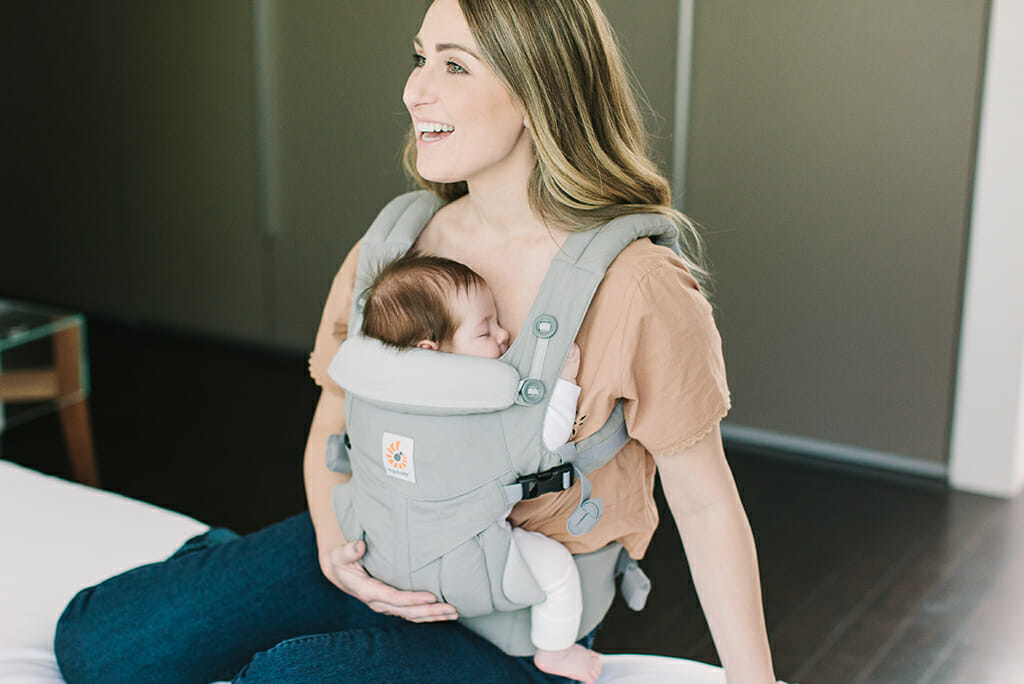When it comes to transporting your precious little one, ensuring their safety and comfort is of utmost importance. Enter the world of baby carriers—practical, convenient, and a bonding experience for both parent and infant. However, not all baby carrier positions are created equal. In this article, we will explore the essential aspects of infant carrier positioning, focusing on what constitutes a safe and ergonomic stance for your baby.
From understanding the natural curve of their spine to the importance of hip development, we’ll guide you through best practices and tips for securing your baby in a way that promotes their well-being. With a few simple adjustments, you can enjoy hands-free moments with your little bundle of joy, all while prioritizing their safety first!
Understanding the Optimal Baby Carrier Position for Infants

When choosing the right position for your infant in a baby carrier, prioritizing safety and comfort is crucial. The ideal position allows your baby to maintain a natural posture, supporting their developing spine and hips. The optimal baby carrier position is typically a frog-leg posture, where the baby’s knees are higher than their bottom. This position not only promotes healthy hip development but also provides security and warmth, making your little one feel snug and protected.
It’s essential to ensure that your baby’s face is visible and not buried against you. This helps prevent any potential breathing difficulties. When using a carrier, check the following aspects to ensure optimal positioning:
-
- Head Support: Ensure your baby’s head is supported and that they can freely turn their head to breathe comfortably.
-
- Spine Alignment: The carrier should allow your infant’s spine to have a natural, rounded shape.
-
- Leg Positioning: Legs should be in a ‘M’ shape with knees up and apart for proper hip alignment.
Different baby carriers offer various ways to hold your infant safely. Consider the following types to find what best suits your needs:
| Carrier Type | Pros | Cons |
|---|---|---|
| Wrap Carrier | Customizable fit, promotes bonding | Can be complex to tie |
| Structured Carrier | Easy to put on, good support | Less versatility in positioning |
| Ring Sling | Quick adjustments, stylish | Can be challenging for longer wear |
Recognizing Signs of an Unsafe Carrying Position
When using a baby carrier, it’s essential to ensure that your little one is in a safe and comfortable position. There are several signs to watch for that might indicate an unsafe carrying position. One key sign is if the baby’s chin is tucked too closely to their chest, which can restrict airflow and lead to breathing difficulties. Ideally, your baby’s head should be supported and positioned so that their airway remains clear, allowing for easy breathing.
Another critical indicator is the baby’s leg position. A safe carrying position allows the baby’s legs to be in an “M” shape, with their knees higher than their bottom. If you notice that your baby’s legs are dangling straight down or are tightly pressed against their body, this can pose a risk for hip dysplasia and restrict their natural movement. Maintaining a natural position for your baby’s hips is crucial for their physical development and comfort.
Pay attention to your own body while carrying the baby as well. If you experience discomfort or strain in your back, shoulders, or hips, it may signal that the carrier isn’t providing proper support for both you and your child. A well-fitted carrier should distribute weight evenly across your body, reducing stress on specific areas. Here is a quick reference table that summarizes critical signs of an unsafe carrying position:
| Sign | Implication |
|---|---|
| Chin down towards chest | Potential airway blockage |
| Legs dangling straight down | Risk of hip dysplasia |
| Discomfort in carryer’s body | Poor weight distribution |
Essential Tips for Ensuring Safety and Comfort
When it comes to using a baby carrier, ensuring that your little one is safely positioned is of utmost importance. Always check that the carrier supports your baby’s neck and head, especially for newborns who lack control over their movements. The **Tightness Test** can be a helpful guideline: if you can fit more than one finger between your baby and your body, it’s time to adjust the carrier. **Comfort** is also crucial; both you and your baby should feel at ease while using the carrier. Explore the following tips to ensure a secure and comfortable experience:
-
- **Choose the right carrier**: Evaluate different styles (wrap, structured, or sling) and select one that fits your body type and lifestyle.
-
- **Proper positioning**: Your baby should be in an upright position, with their chin off their chest and their back supported.
-
- **Leg positioning**: Make sure your baby’s legs are in the ‘M’ position, allowing for healthy hip development.
Another key aspect is the adjustment of the carrier. Adjust the straps to ensure that the weight is distributed evenly to prevent strain on your back. Take notice of your baby’s body language; if they seem uncomfortable, it may be time to readjust or take a break. A reliable checklist can streamline this process:
| Checklist for Safety and Comfort |
|---|
| Check for secure fastening |
| Ensure correct leg position |
| Monitor baby’s head and neck support |
| Adjust straps for comfort |
| Use a mirror to check positioning |
Lastly, remember that your baby’s comfort is intertwined with their safety. Regularly inspect the carrier for wear and tear, as a compromised carrier can lead to unsafe situations. Practice adjusting the carrier before venturing out to guarantee a smooth outing. Familiarizing yourself with the carrier while indoors can build your confidence and allow for a more pleasant experience when you’re on the go. By following these essential tips, you can enjoy the bonding experience of babywearing with peace of mind.
Choosing the Right Baby Carrier for Your Lifestyle
When selecting a baby carrier, consider your unique lifestyle and daily routines. Different carriers serve various purposes, and understanding your needs will help you find the best fit. For example, if you enjoy outdoor adventures, a robust hiking carrier with ample support and storage would be ideal. On the other hand, if you frequently navigate urban environments or public transportation, a compact and lightweight option might suit you better. Ensure that the carrier you choose can adapt to your activities while providing the necessary comfort for both you and your little one.
It’s also essential to think about how often you plan to use the carrier. If you’re an active parent who carries your baby regularly, look for a model that offers **ease of use** and is quick to put on and take off. Here are some features to consider:
-
- **Adjustable straps** for a customized fit
-
- **Easy-to-clean fabric** for busy lifestyles
-
- **Multiple carrying positions** for versatility
These features not only enhance comfort but also ensure the safety of your infant by allowing you to secure them snugly and properly.
be mindful of the **age and weight specifications** of the carrier you choose. Many carriers are designed with specific weight limits, which can affect their usability as your child grows. Consider the following dimensions when making your selection:
| Carrier Type | Age Range | Weight Limit |
|---|---|---|
| Wraps | Newborn to Toddler | Up to 35 lbs |
| Soft Structured Carriers | 3 months to 4 years | Up to 45 lbs |
| Frame Carriers | 6 months to 4 years | Up to 50 lbs |
Ultimately, the right carrier will enhance your parenting experience while ensuring your child’s safety, comfort, and happiness. Taking the time to evaluate your options based on your lifestyle will lead you to make an informed choice that meets your family’s needs.
Q&A
Q&A: Infant Correct Baby Carrier Position – Safety First
Q1: Why is the correct position important when using a baby carrier?
A: The correct position is crucial for your baby’s safety and comfort. An improper position could lead to breathing difficulties, spinal misalignment, or hip dysplasia. Ensuring your baby is in the right position helps promote healthy physical development and gives you peace of mind while carrying them.
Q2: What is the ideal position for an infant in a baby carrier?
A: The ideal position for an infant in a baby carrier is often referred to as the “M” position. In this position, your baby’s knees should be higher than their bottom, creating a natural curve in the spine while supporting the hips. The carrier should hold your baby snugly against your body, allowing their legs to spread comfortably.
Q3: How can I tell if my baby is in the correct position in the carrier?
A: To check if your baby is in the correct position, ensure their knees are bent and positioned above their bottom. Their back should be slightly rounded, and their head should be close enough for you to kiss. Additionally, make sure that their chin is off their chest, which promotes clear airways.
Q4: What are some common mistakes parents make when using a baby carrier?
A: Some common mistakes include placing the baby too low in the carrier, which can restrict airflow, or allowing their legs to dangle, which may place unnecessary strain on the hips. It’s also important to avoid slouching, as this can affect your baby’s position and comfort.
Q5: At what age can I start using a baby carrier with my infant?
A: Most baby carriers are designed for use from birth, but it’s essential to check the manufacturer’s guidelines. Many carriers come with an infant insert that provides extra support for smaller babies. Always ensure that your baby meets the weight and age requirements before using the carrier.
Q6: How do I ensure my baby is safe and comfortable in the carrier?
A: To ensure safety and comfort, regularly check the carrier’s adjustments for a snug fit and monitor your baby’s position. Make sure their face is visible and not obscured by fabric or the carrier. Regularly check for signs of discomfort, such as fussiness, and take breaks if needed.
Q7: What should I look for in a baby carrier?
A: Look for a baby carrier that provides proper support, is adjustable, and allows for multiple carrying positions. The carrier should also have breathable fabric to keep your baby comfortable. Make sure it’s easy to use and that you can securely fasten it on your own.
Q8: Can I use a baby carrier while doing household chores?
A: Yes, you can use a baby carrier while doing light household chores as long as your baby is securely positioned and you can move comfortably. Be cautious with tasks that require bending or lifting, and always prioritize your baby’s safety. If you feel you cannot adequately supervise your baby, it’s best to place them in a safe spot while you work.
Q9: Are there any online resources for learning about baby carrier safety?
A: Absolutely! Many organizations, such as the International Hip Dysplasia Institute or Babywearing International, offer valuable resources on babywearing safety and techniques. Additionally, you can find instructional videos on platforms like YouTube that demonstrate the proper use of various types of carriers.
Q10: Where can I find community support regarding babywearing?
A: Community support can be found through local babywearing groups, parenting forums, and social media platforms. Joining a babywearing group can provide you with hands-on help, tips, and shared experiences from other parents. Many local groups even hold meet-ups and classes to help you feel more confident in your babywearing journey!
By ensuring you have the correct baby carrier position, you’re taking a big step towards both your baby’s safety and comfort. Happy carrying!
Wrapping Up
ensuring the correct baby carrier position is not just about comfort; it’s a vital component of your infant’s safety and well-being. By following the guidelines outlined in this article, you can help promote healthy development while fostering that special bond between you and your baby. Remember, a well-secured baby is a happy baby, and with a little practice, you’ll soon be a pro at safely using your carrier. As always, trust your instincts and don’t hesitate to seek advice if you have any concerns. Happy carrying!


